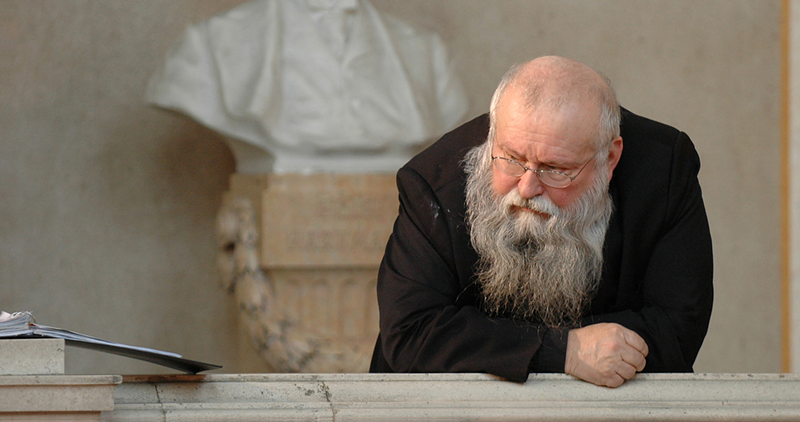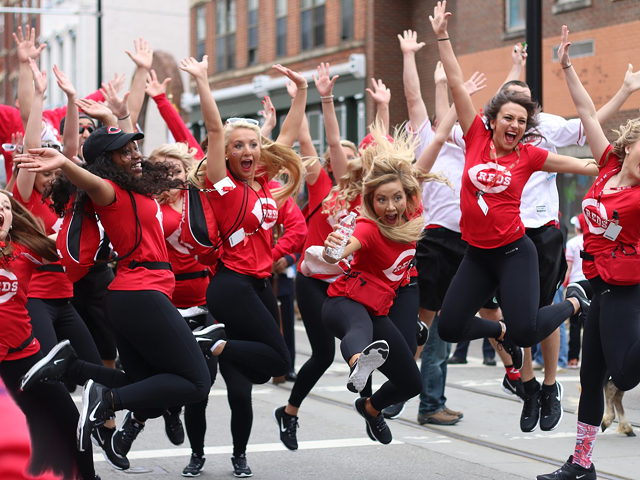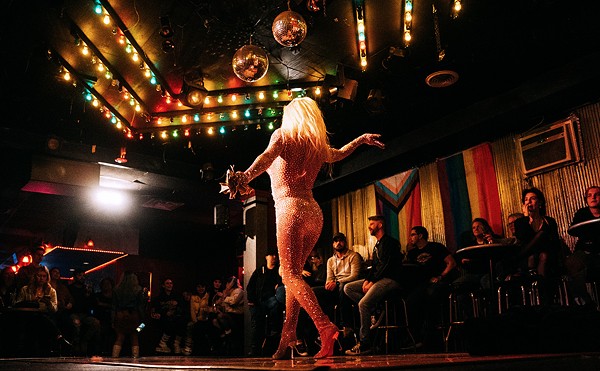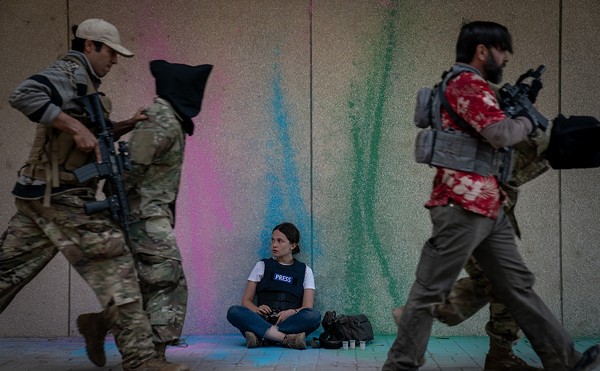This is the 50th anniversary of the most eventful year of the 1960s, itself a decade of change and upheaval, and it will see all manner of media remembrances before 2019 arrives. It was an excitingly creative yet dangerous time — blood was spilled in the streets here and overseas in America’s awful, losing war in Vietnam.
Blood was spilled at University of Cincinnati, too, 50 years ago this week. Or so it appeared to anyone who attended the “action” performed on April 4, 1968 by the extraordinarily controversial, confrontational Austrian performance artist Hermann Nitsch. He was at the school’s 1968 Spring Arts Festival, which has been called by historian/blogger Greg Hand “the most avant-garde week in Cincinnati history.”
“It was a great success,” says Nitsch, during a Skype phone interview from his Austrian offices. (His assistant helped him reply to questions.)
The festival featured a who’s who of Contemporary anti-establishment, avant-garde artists — radical counterculture band The Fugs, performance/media artist Nam June Paik with the now-legendary topless cellist Charlotte Moorman, experimental filmmakers Jonas Mekas, Peter Kubelka and Jud Yalkut, and more.
But even among them, Nitsch was special. Now 78, he has developed an international reputation as a forceful painter. But in the late 1950s and through the 1960s, the European performances of his Orgien Mysterien Theatre caused him to be jailed for public indecency. Ritualistic in nature, especially in their use of animal carcasses, his work struggled to find a cathartic, audience-participatory way to show the human need for emotional and physical release. He also, maybe, was commenting on our propensity for violence. He held actions that called on his audiences to, in the words of his Nitsch Foundation’s website, “pour and slop fluids” like wine, hot water, Chasselas (a wine grape), lukewarm water, urine, hot blood serum, alcohol, blood, greasy wash water, paint and “etc.”
But he had never come to the United States before arriving in 1968 for two actions in New York City and one in Cincinnati. It’s been hard to find people who remember attending his April 4 performance in the Great Hall of UC’s Tangeman University Center. But the late Cincinnati filmmaker Steve Gebhardt, with partner Bill Fries, made a 9-minute film of the event, which can be rented from The Film-Makers’ Cooperative. And UC’s News Record wrote a front-page story describing Nitsch’s appearance.
According to that story, he brought a gutted 200-pound carcass of a pig to the hall and, while volunteers played on band instruments, encouraged the near-capacity crowd to become involved as he became stained with a bright red liquid that appeared to be blood. (He told CityBeat he preferred to use blood whenever possible in his actions and believes he used it in Cincinnati.)
“In the final stages of the performance, Nitsch became extremely involved with his art and after tossing a few entrails at the audience it brought back participation from the crowd in what could be likened to a pie-throwing fight,” the News Record reported.
The film presents not quite so blithe a picture. At times, it seems to be chronicling some kind of cult sacrifice — Nitsch, in a white shirt and dark pants, sticks his hands inside the open belly of the hanging pig; a barefoot student lies on the floor as Nitsch pours the liquid redness from a vial onto him; students mill about the “bloody” floor.
It’s impossible to watch now and not think of American violence. Perhaps most remarkable is that Nitsch’s action occurred after Martin Luther King, Jr. was assassinated earlier in the evening in Memphis. Some in attendance may not have even known yet.
“Before I started to perform, Jonas Mekas told me about Martin Luther King and asked if I wanted to say that this is dedicated for (him),” Nitsch says. “For me, the death of Martin Luther King was so sad. (But) for me, it would be bad to connect this sad incident with my work. But I knew about the death, and in my heart it was there. That action in Cincinnati was not a normal action. It was a really intensive action.”






